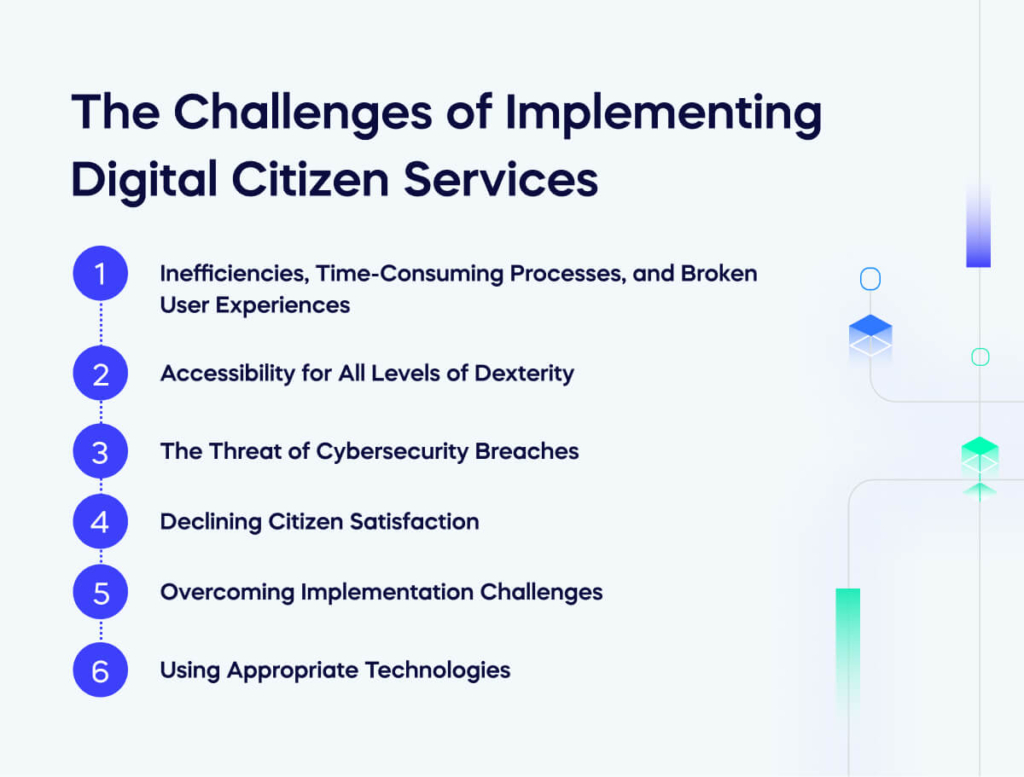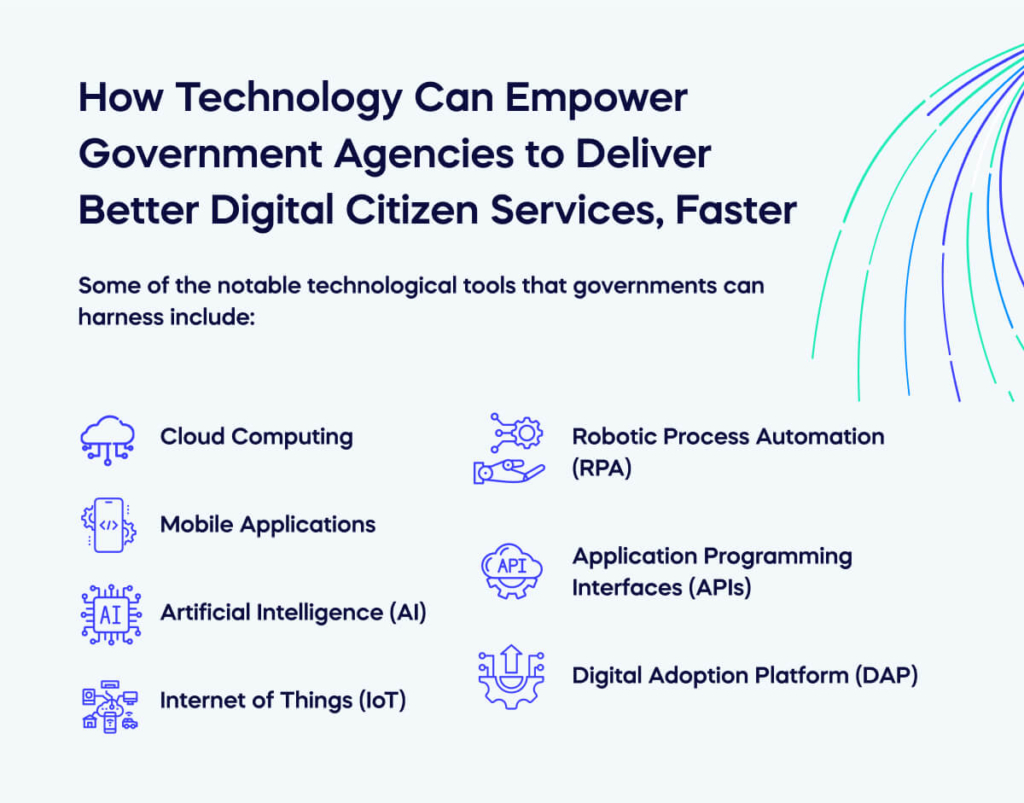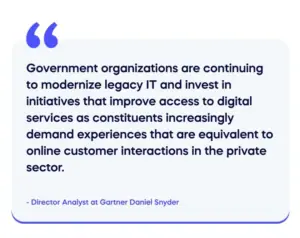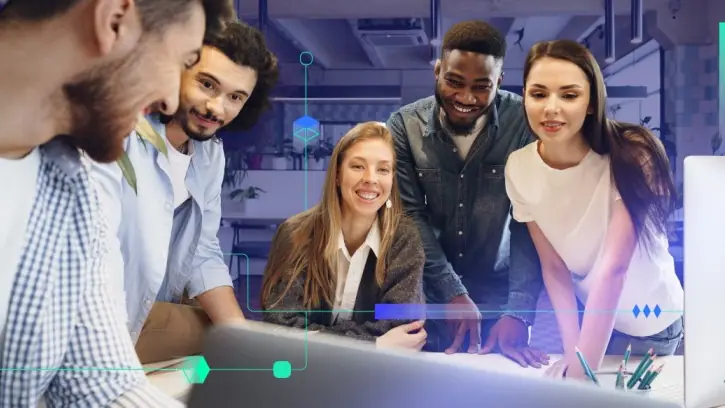Governments across the world are being pushed to keep up with the digital transformation taking place in multiple industries.
The chaos caused by COVID-19 was felt on a macroeconomic level, and none more so than by the public sector, which had to endure a sea of change and make technological adaptations while on the frontline of a major global event.
It’s clear outdated and inefficient legacy systems need to be replaced by modernized digital services, enabling citizens to access public services more efficiently. Governments are now looking to leverage technologies such as cloud computing, artificial intelligence, and machine learning to deliver faster and better results for their citizens.
According to Gartner, most government organizations remain at a low to moderate level of digital maturity when delivering public services. Of the surveyed organizations, 80% had a digital maturity rating of two or lower out of the five-level scale.
The digitization of government services had already started before the outbreak of COVID-19, but its effects have been immense. The pandemic caused a never-before-seen spike in digital transformation, altering how governments interact with their citizens and providing them with access to services at an accelerated rate.
This article discusses digital citizen services – how they work, why they are needed, and their potential benefits. We also explore the implementation challenges, how technology can help streamline delivery, and examples of successful implementations. We aim to provide readers with an understanding of how investments in digital citizen services can strengthen public ties between citizens and governments.
Global government services have often needed to catch up compared to the private sector, which has long exceeded expectations for delivering enhanced digital services.
Through modernization and continuous improvement of these digital services, governments can provide better experiences for their citizens.
Defining Digital Citizen Services
Digital citizen services are a collection of services that governments provide through digital means to citizens. These services are designed to make government operations more efficient, transparent, and accessible to the public. Digital citizen services are delivered through various digital channels such as websites, mobile applications, and social media platforms.
The main goal of digital citizen services is to provide citizens with easy access to government services and information. These services include but are not limited to paying taxes, renewing licenses, applying for permits, registering to vote, and obtaining government documents. Digital citizen services also provide a channel for citizens to give feedback to the government, report issues, and request support.
A successful use-case of predominantly digital citizen services can be seen with SingPass, Singapore’s national digital identity system, which has over 6 million registered users and is used for over 200 government services.
Understanding The Need For Improved Digital Citizen Services
The demand for digital government services in the US remains high, even though some of them were shut down or limited due to the pandemic.
Government CIOs and digital leaders must recognize the need to improve digital citizen services. Today’s citizens demand highly accessible, easy-to-use, and always-available digital services, making it a pressing need to upgrade existing systems to meet these evolving expectations.
Efficient digital citizen services can induce greater citizen engagement and satisfaction, further bolstering trust in government institutions. This triggers a positive domino effect improving civic participation, community building, public safety, and other crucial areas for a seamlessly functioning society.
However, it’s important to note that simply providing these services isn’t sufficient anymore. Users expect seamless digital experiences that are accessible and user-friendly in terms of the user experience (UX), catering to the needs of all types of digital users.
To sum up, modernized digital citizen services have become indispensable for modern governance. Recognizing its importance by government CIOs and digital leaders is crucial in leading this transformational effort.
Benefits of Digital Citizen Services
The benefits of technology-enabled service delivery by government agencies are numerous. Using technology, government agencies can provide citizens with 24/7 access to services, reduce paperwork, modernize processes, and improve efficiency. This leads to faster turnaround times, improved communication, cost efficiencies, and overall customer satisfaction.
One of the primary benefits of digital citizen services is convenience. Rather than waiting in lines and traveling to various government offices, digital government transformation will see these services available online. This makes information and services more readily accessible while increasing efficiency, leading to faster response times.
Digital citizen services also provide greater transparency and accountability. By monitoring and recording data on key service delivery metrics, governments can determine where they’re being effective and identify areas that need improvement. Despite security concerns, these services have also recognized data privacy as paramount, which ensures citizens can trust that their data will be kept confidential.
In addition, digital citizen services contribute significantly to achieving sustainable development goals since they help reduce carbon emissions by imparting a paperless process. To reduce the carbon footprint, people can submit documents online or receive e-documents, eliminating the need for in-person visits or physical papers.
The Challenges of Implementing Digital Citizen Services

Digital citizen services can provide a more efficient and convenient way for citizens to access government services. However, this comes with various challenges that government organizations must overcome to fully realize digitalization’s benefits.
Inefficiencies, Time-Consuming Processes, and Broken User Experiences
Implementing digital citizen services can face inefficient processes, time-consuming procedures, and poor user experiences. These challenges can cause frustration and dissatisfaction among citizens, decreasing trust in government services. Addressing these problems by streamlining processes and improving user experience can lead to better engagement with the public.
Accessibility for All Levels of Dexterity
Digital services must be accessible to everyone regardless of their physical abilities, including those with varying levels of mastery. Addressing issues related to accessibility requires making extra efforts to ensure that the service is usable for all citizens.
The Threat of Cybersecurity Breaches
The broader threat landscape for government organizations is ever-present, with cybersecurity breaches and data leaks becoming rampant. Requiring more investment in security measures, infrastructure, and trained personnel to ensure data protection and privacy, government organizations must address safety concerns when implementing citizen services.
Declining Citizen Satisfaction
Citizen satisfaction with government services has been on the decline for many years. Ensuring that digital citizen services meet the needs and expectations of citizens requires using empathetic design principles and continuous feedback-based improvement.
Overcoming Implementation Challenges
Strategies for overcoming implementation challenges involve breaking down the transformation into specific, bite-sized steps that can be efficiently executed. This strategy includes identifying the goals, stakeholders involved in the change, policies, laws, and funding required.
Using Appropriate Technologies
Using the right technology can significantly reduce the burden of citizen services implementation. Modernization tools like cloud services, eSignatures, DAPs, and APIs can help streamline government services while reducing costs. However, selecting appropriate technology and tools requires careful consideration and testing.
How Technology Can Empower Government Agencies to Deliver Better Digital Citizen Services, Faster

The adoption of technology has revolutionized every aspect of life, and its impact on service delivery by government agencies cannot be emphasized enough.
The digital disruption we are experiencing has created endless possibilities for government agencies to improve how they serve their citizens. As such, governments must use technology and tools that deliver better and faster digital citizen services.
In the age of the digital ecosystem, technology adoption is not just a necessity, but it is also a competitive advantage. As citizens become more tech-savvy and demand instant and easily accessible services, government agencies that do not adopt the latest technologies risk becoming irrelevant.
From promoting efficiency and transparency to providing greater accessibility, various technologies are already revolutionizing the critical services governments offer.
Some of the notable technological tools that governments can harness include:
Cloud Computing – allows government agencies to store data and run applications over the internet, lowering the cost of data storage and accessibility for citizens.
Mobile Applications help government agencies better interact with citizens, giving them easy access to services, forms, and important government information.
Artificial Intelligence (AI) – can help automate repetitive tasks and improve service delivery, reducing response times and enabling predictive analytics in many areas, such as public safety.
Internet of Things (IoT) – sensors placed in various locations allow government agencies to collect real-time data on traffic, air quality, and other environmental factors, improving public safety and enabling smarter management of government assets.
Robotic Process Automation (RPA) – automates manual, repetitive administrative tasks, enabling citizens to access services more quickly and reducing operational costs.
Application Programming Interfaces (APIs) allow government agencies to automate information sharing between government and third-party systems, facilitating faster, more efficient service delivery.
Digital Adoption Platform (DAP) – allows government agencies to engage with citizens through personalized messaging and in-context guidance, increasing adoption rates and improving digital service delivery.
How can government organizations digitize and automate processes to improve the citizen experience?
With technological advancements, it has become imperative for government organizations to leverage digital solutions to improve the citizen experience. Here are some solutions that government organizations can use to digitize and automate processes to enhance the citizen experience:
Electronic Document Management Systems: Electronic Document Management Systems (EDMS) can enhance government processes by digitizing documents and providing easy access to citizens. This makes it easier for citizens to access government services and documents while reducing bureaucracy, errors, and wait times.
User-Friendly Online Portals: To improve the citizen experience, government agencies can offer online services through portals with a slick and intuitive user experience (UX). Citizens need access to user-friendly portals to complete various transactions, such as renewing licenses, paying taxes, and registering for services. User-friendly portals reduce frustration for users, yield a positive experience, and enhance their trust in the government’s ability to provide efficient and effective services.
Mobile Applications: Government organizations can create mobile applications that give citizens access to government services and information. This makes it easier for citizens to stay informed and access services quickly and efficiently, leading to greater satisfaction.
Digital Adoption Platforms (DAP): As we previously mentioned, DAPs simplify complex government processes by providing step-by-step guidance to citizens, personalized assistance, and enhancing accessibility. DAPs help empower digital processes, lowering the time and effort required for citizens to complete necessary transactions accurately.
By tailoring guidance to individual needs, DAP can enable citizens with limited digital literacy or less tech-savvy to navigate digital processes successfully. This allows government agencies to boost citizen engagement by providing relevant information and updates on their application status, enhancing transparency and accountability.
Bridge the Gap With WalkMe’s DAP
Government citizen services are usually complex and can take up much valuable time for citizens, particularly when navigating digital procedures. Enter WalkMe’s Digital Adoption Platform (DAP), which can help simplify and enhance accessibility for citizens who have limited tech proficiency.
By providing personalized guidance and support, the DAP can improve critical processes, offer updates on application status, and promote transparency and accountability. Government CIOs and digital leaders can leverage this tool to enhance citizen engagement and create a more user-friendly experience for those interacting with government agencies.
Examples of Countries That Successful Utilized Tech Platforms for Citizen Services Delivery
Several countries worldwide have seized the opportunity to leverage nascent technology solutions to enhance citizen services. In this regard, we’ll examine some countries that have successfully adopted technology platforms to deliver efficient services to their citizens.
IRS2Go Mobile App
The IRS has launched its IRS2Go mobile application, accessible to taxpayers using either Android or iOS devices. The app offers a swift and secure process for filing taxes, allowing users to store information from previous years, track refunds in real-time, check the status of their tax returns and receive assistance with any IRS-related questions.
Moreover, the app also improves the process by enabling direct deposit of refunds into users’ bank accounts, accelerating the refund process. Apart from this nifty mobile application, the IRS provides other digital services, including online payment plans and webinars, assisting taxpayers who require additional support during tax filing season.
The Aadhaar Program
India’s Aadhaar program has successfully transformed how government services are delivered to its 1.2 billion citizens. Launched in 2009, the program provides unique digital identity numbers to citizens and enables them to access banking, mobile phones, and government subsidies. One of the key benefits of the Aadhaar program is the reduction in fraud and corruption in the welfare system.
According to an Oxford University study, Aadhaar is the world’s most comprehensive biometric identity program, covering approximately 16% of the global population. While technological advancements like Aadhaar have brought the government closer to its people, some individuals remain marginalized. For instance, in sub-Saharan Africa, over half of the population (55%) has no official identification record, yet, interestingly, 67% of people in the region subscribe to a mobile phone network.
The COVID-19 Vaccination Information and Appointment Scheduling website
In January 2021, the White House launched “Vaccines.gov,” a comprehensive online portal for providing up-to-date information and appointment scheduling for COVID-19 vaccinations.
The website makes it easier for citizens to find and schedule vaccination appointments and provides vaccine safety and efficacy information. The website has been well-received by citizens and has helped to accelerate the vaccination process more efficiently.
The White House launched the site in partnership with the CDC, the Department of Health and Human Services (HHS), and other federal agencies. The CDC provided technical assistance and resources to help develop the website and ensure that it provided accurate and up-to-date information on COVID-19 vaccinations.
Strengthening Public Ties in the Digital Age: The Importance of Modernized Citizen Services
Now more than ever, it’s important that government bodies and CIOs launch initiatives that strengthen public ties through modernized digital citizen services. From streamlining bureaucratic processes to increasing accessibility, these efforts can improve the citizen experience and make government services more effective.
Not only do modernized digital services create efficiencies, but they also help to shape a SMART society. Government entities can provide more personalized and secure services by leveraging emerging technologies like blockchain, cloud computing, and artificial intelligence. This builds trust and engagement with citizens and helps create a more transparent and agile government.
At the same time, however, ensuring that these digital transformations do not further exacerbate existing inequalities or engender new ones is crucial. As such, government entities need to engage in equitable and inclusive digital strategies and methods to ensure that the benefits of digital services are available to all citizens.
As per Gartner, Inc, the expenditure by governments worldwide on IT is expected to reach $588.9 billion in 2023, displaying a 6.8% rise from the previous year, 2022.

Director Analyst at Gartner Daniel Snyder says, “Government organizations are continuing to modernize legacy IT and invest in initiatives that improve access to digital services as constituents increasingly demand experiences that are equivalent to online customer interactions in the private sector.”
Modernized digital citizen services have immense potential to connect people, empower core processes, and foster trust between government entities and citizens. By embracing emerging technologies and developing strategies that promote equal access and inclusion, we can collectively build a more responsive government and a future that benefits all citizens.

